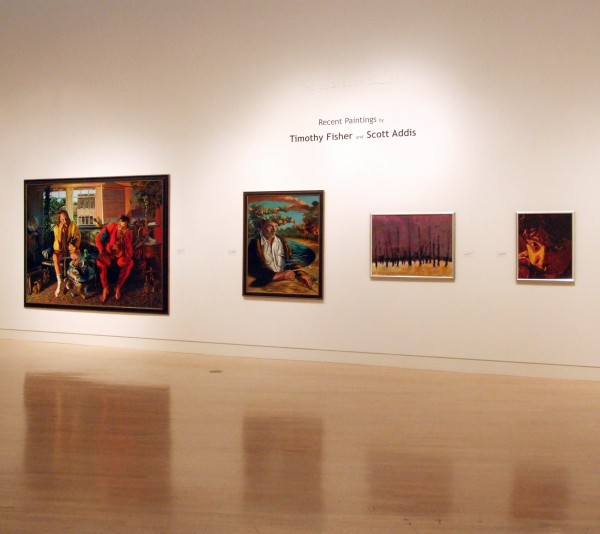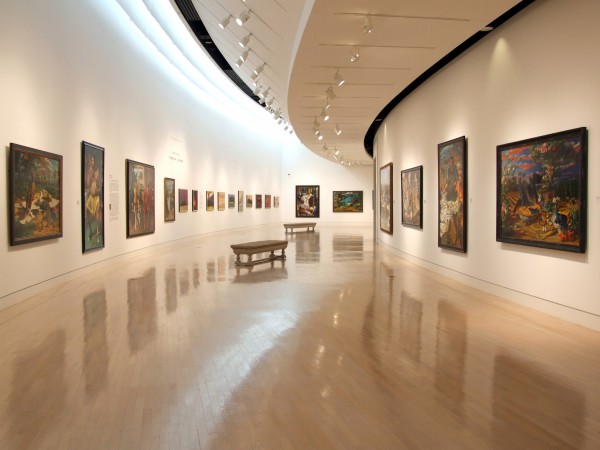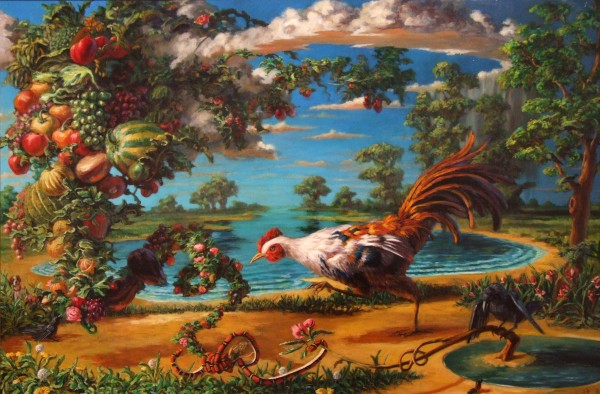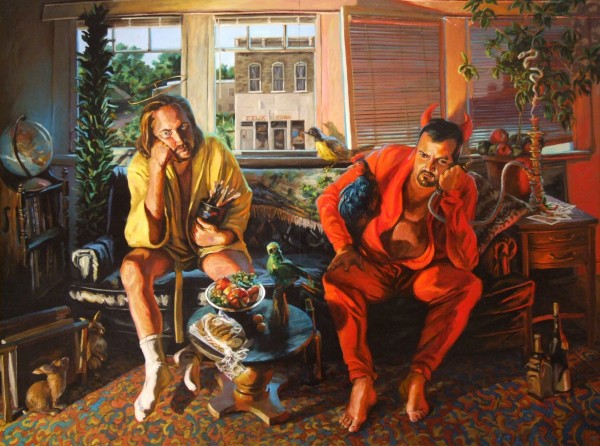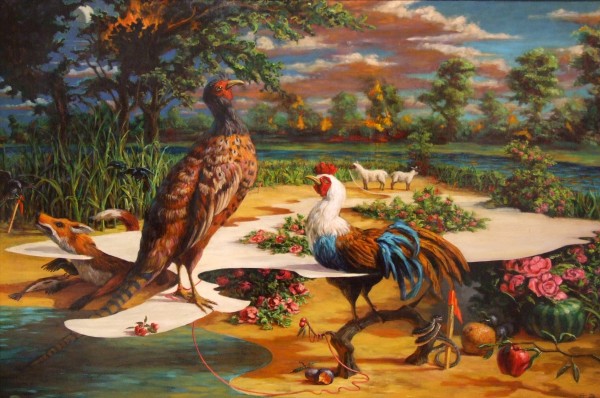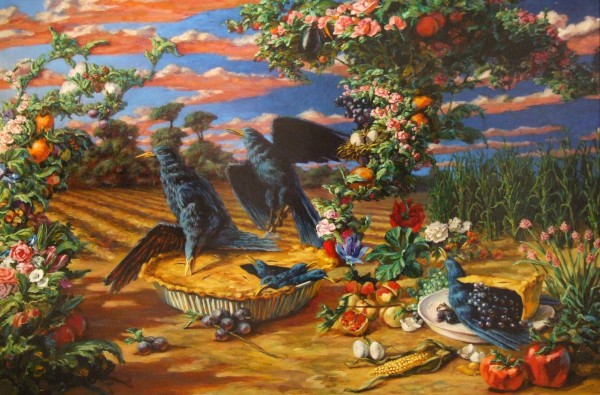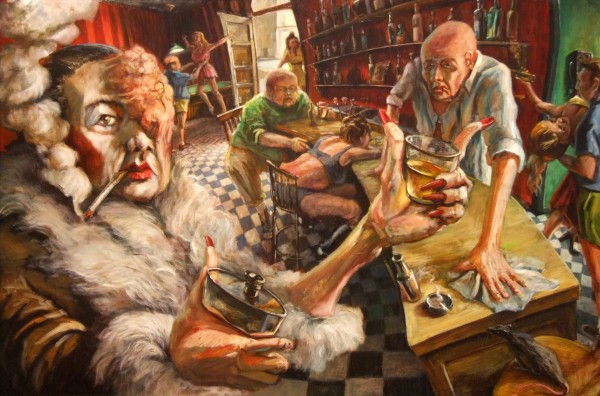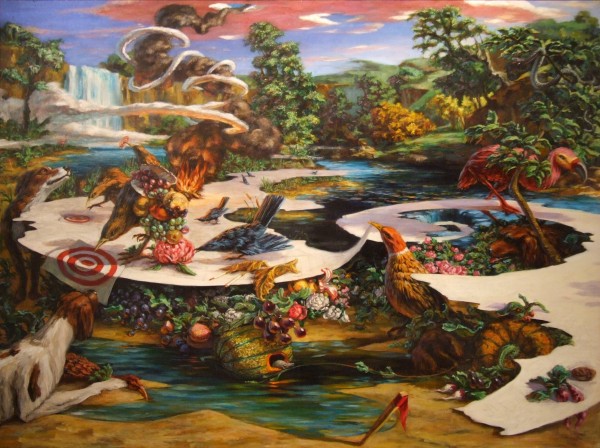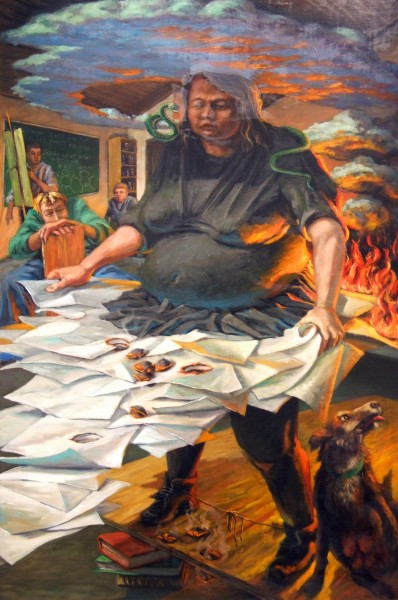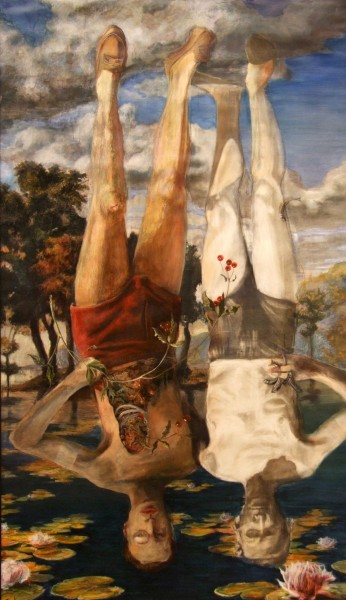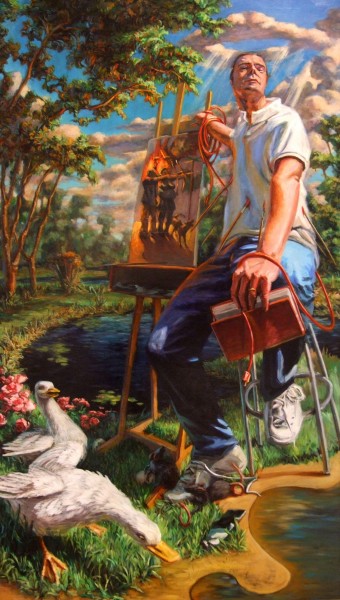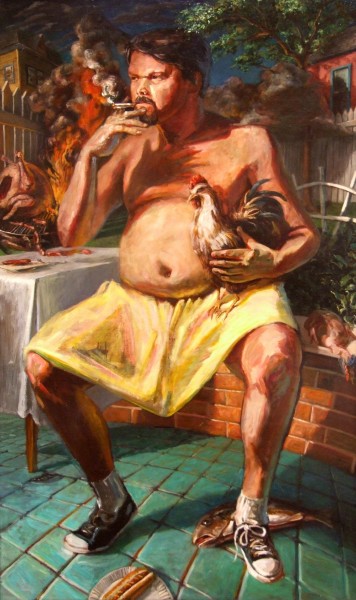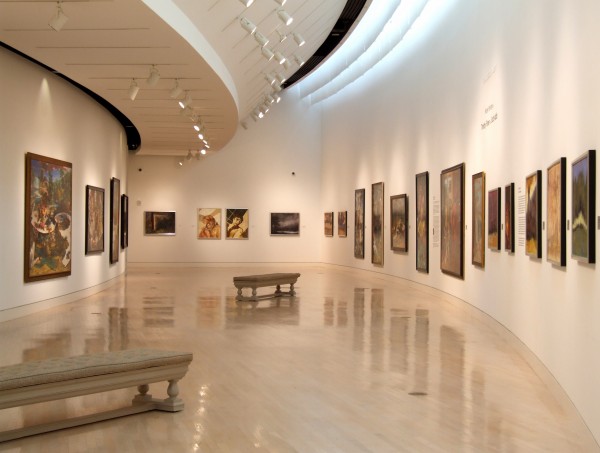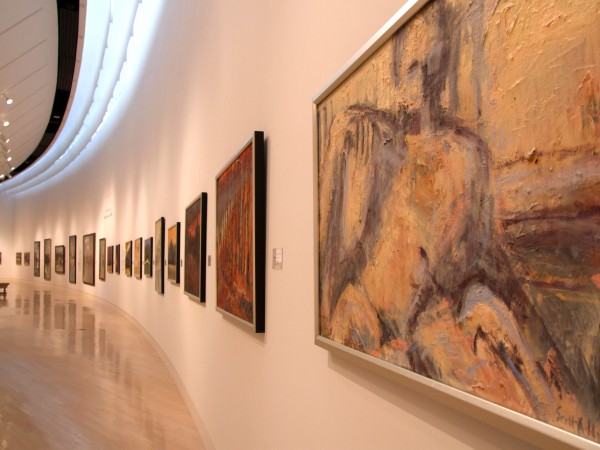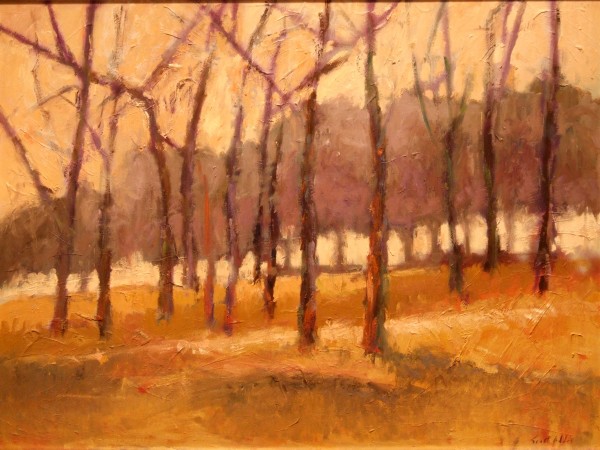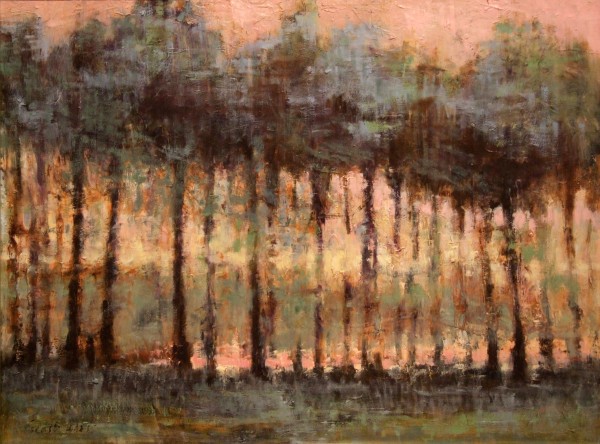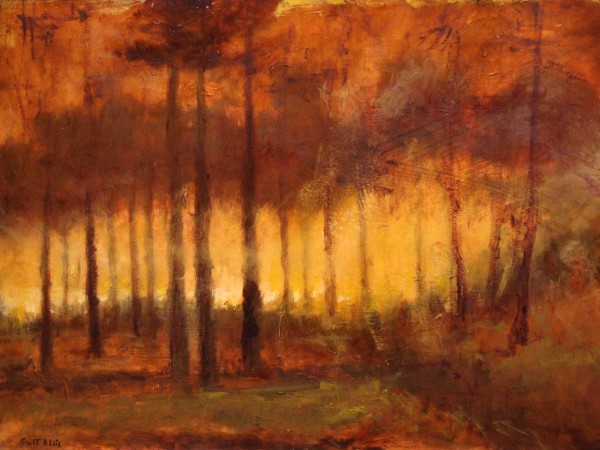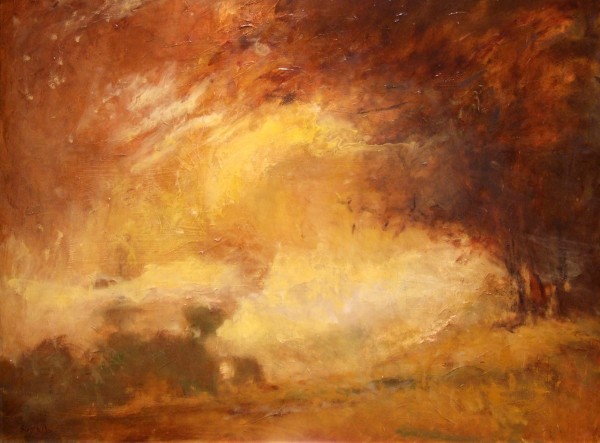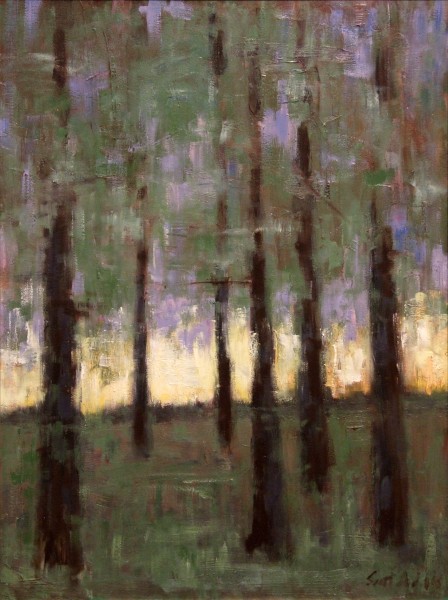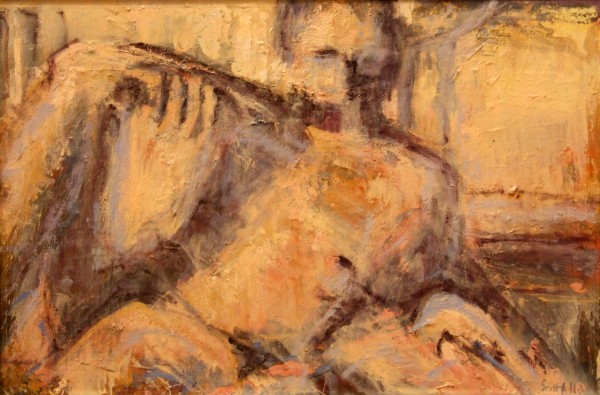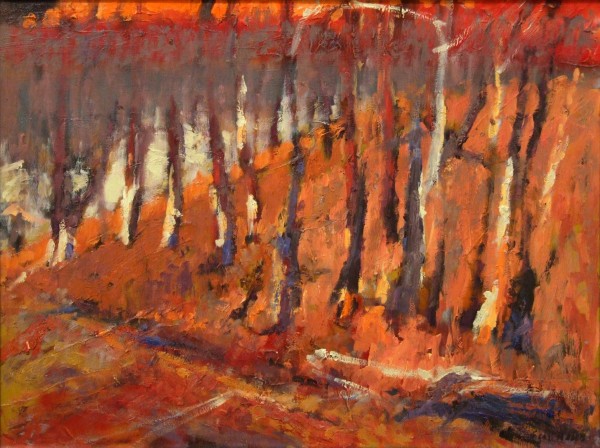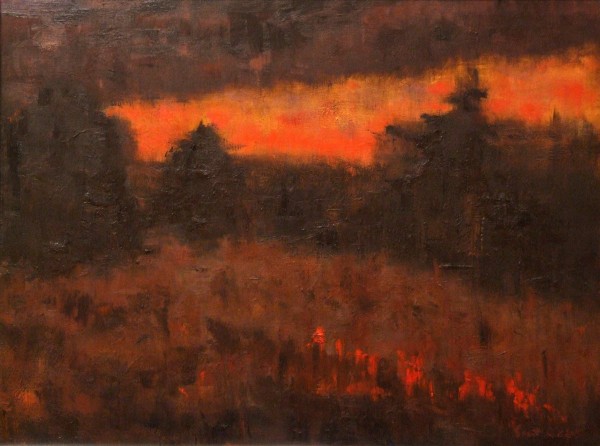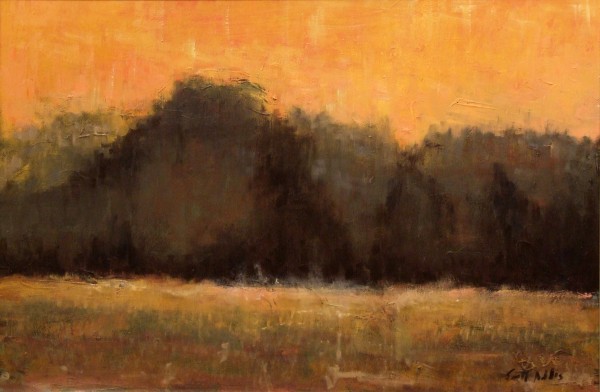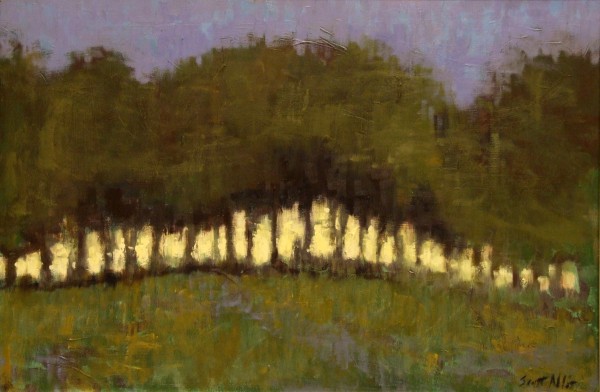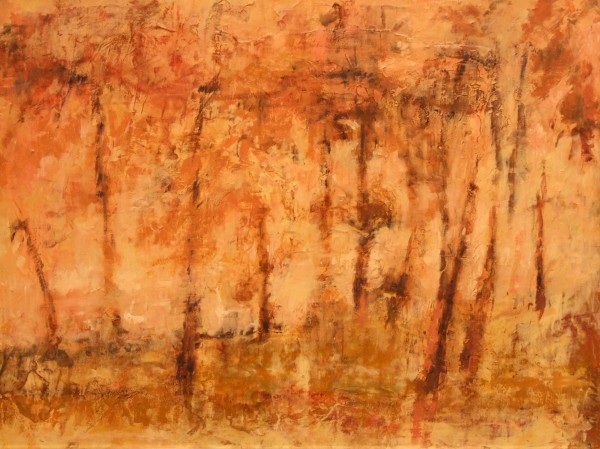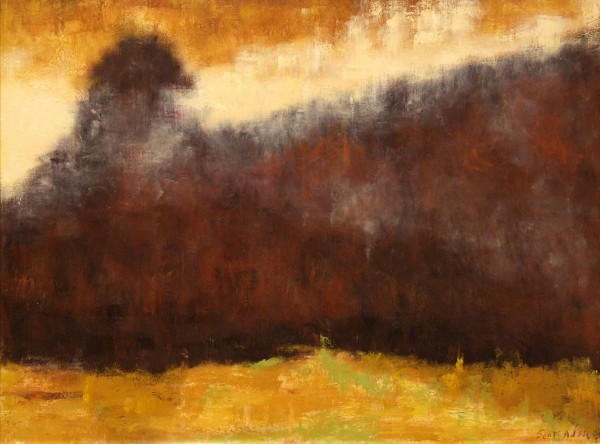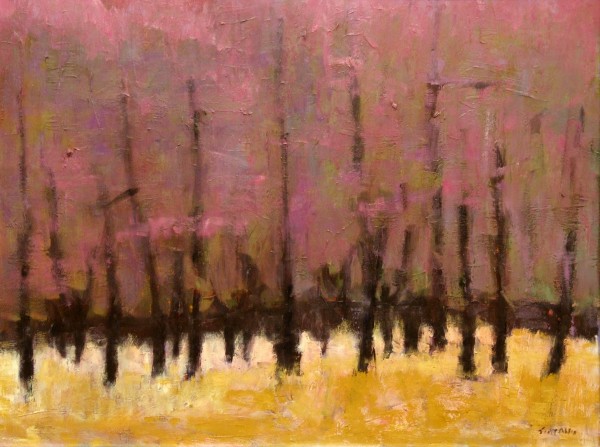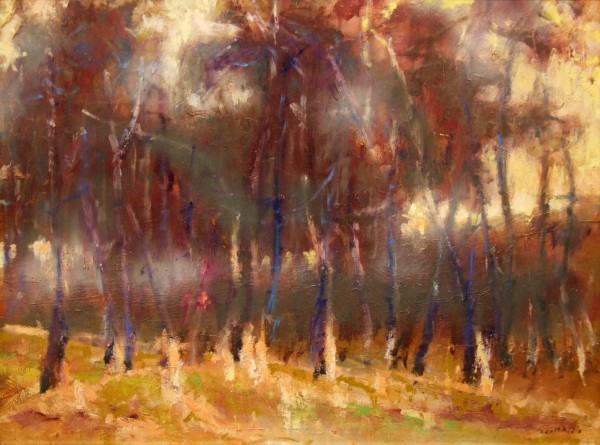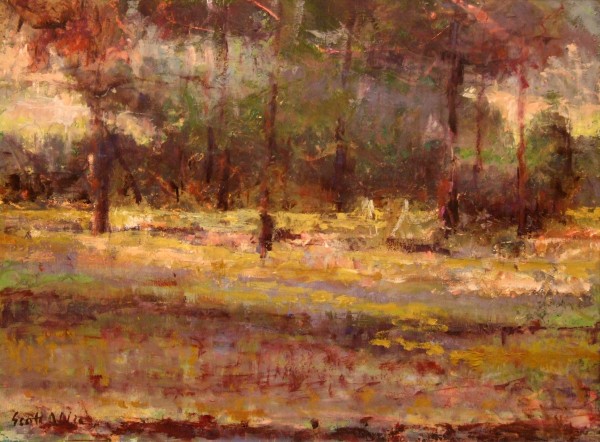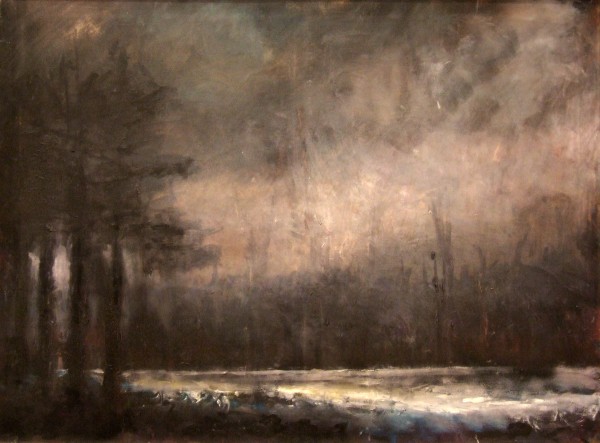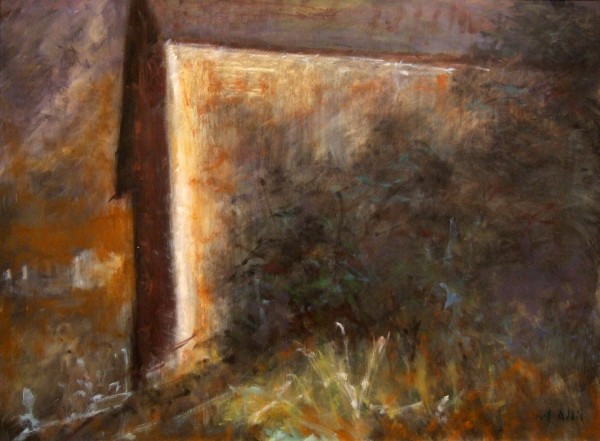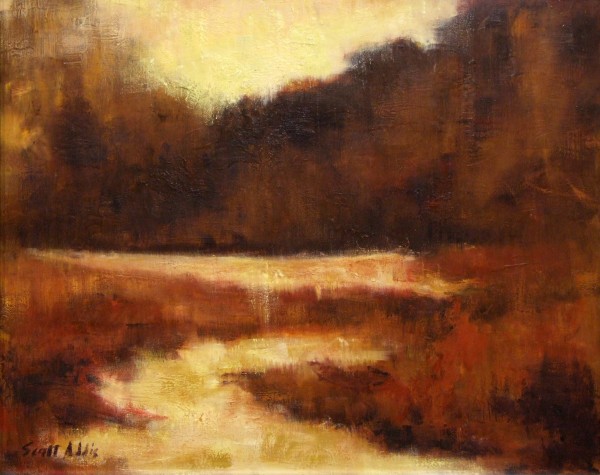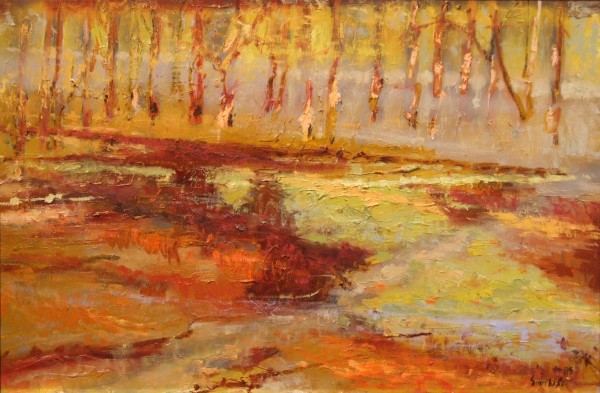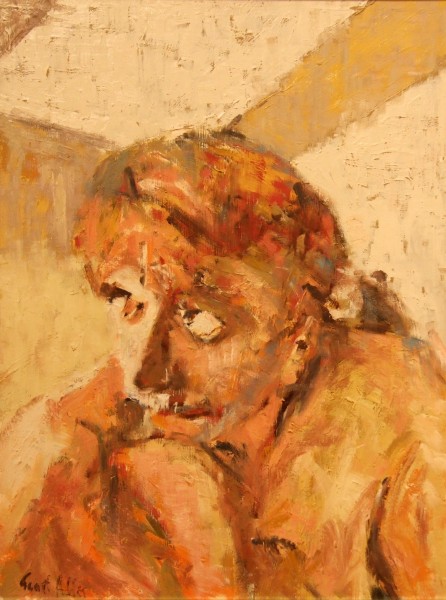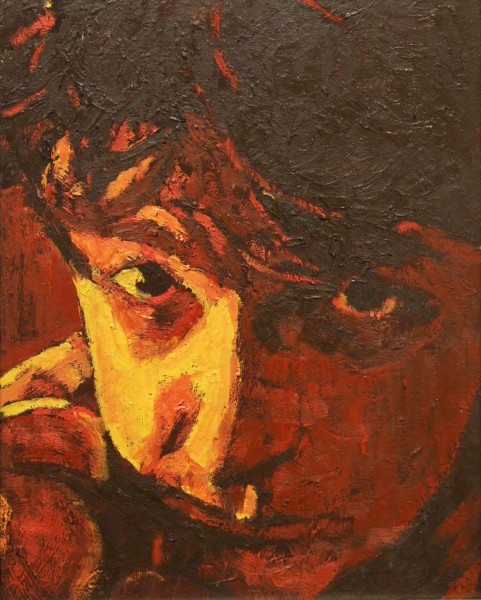Tim Fisher: Recent Paintings and Scott Addis: Landscapes
Sep 9-Oct 28, 2006 Timothy FisherTornados of fruit, milky floating grounds, flora, fauna, and folks are samples of imagery that drift dreamily through this ostensibly traditional work. I strive for understatedly complex, seemingly conventional relationships. Drawing upon the visual traditions in painting, the work explores iconography, archetypes, and narratives. The goal is not to be didactic, but to prompt a reflective questioning, a quiet experience. The initial glance presents something familiar and warm to most. Seen more closely, things seem strange, out of place, sublime, mystical. There is an impression of important events between individuals, a dialogue of both mystery (subconscious) and possibility (conscious). The paintings tend to be large in scale, four by six feet on average, and the scale is crucial. Imagery within the work is depicted life size or larger, since the psychological impact allows the viewer to relate to images on a physical level. In Limbo, two slightly larger than life size figures (about 30 percent) are waiting on a sofa. Here the scale is subtle, relatable to the viewer and of importance. The un-relatable monumental scale is completely avoided since the figures would be otherwordly and super human. It appears to be a relatively straight portrait, but on closer inspection it is of two men costumed as Christ and the Devil. Symbolically, both are in similar but mirrored poses of boredom. Christ hovers over his seat while the Devil weighs heavily on his. Further traditional symbols of rabbits, birds, serpents, books, bread and a globe add to and also confuse the "reading" of the painting. A layer of irony is added since Christ is a depiction of myself. This is meant to acknowledge Albrecht Durer's Self Portrait and its layered meanings and impact on my work. Knowing Durer's intent for the piece will add to the layered meaning and irony of the painting Limbo. Those who know me well will understand this, and those who don't will still pick up on the contrasting irreverence and respect of the symbols. The painting plays with the tradition of the artist's self-portrait and conceptions of genius and the conventions of good and evil, heaven and hell, conflict and boredom. Drawing upon my own European culture and its tradition of symbols and desires, the fluid relationships of the subject, beauty, conflict, passion, suffering and other classic archetypes can be called into rumination, questioning.
Scott Addis
My paintings are an expression of mood or emotion within a design that allows a window in for people to see what they want or need to see. Whether the work is moody – angry or brooding – joyful or exciting – restive or peaceful – the colours and brushwork allow me as an artist tools to both experience and express what I am feelings. These feelings come on strong, are hard even to experience and only a glimpse of them can be translated onto the canvas. The design of a painting is cartooned, borrowed from nature or worked from life, in order to allow the public to see something of the subject in the work. Hopefully most everyone has seen a lazy summer day, full of heat when nothing can be done. We've seen glimpses of sunsets with the promise of another day, rain clouds that remind us of troubles, mornings full of light and promise. The more specific the subject matter, the smaller the window of common experience that is shared. The tension between the message and the window is truly difficult to achieve – too much of one or the other is disastrous to the painting, but working within these parameters gives the work meaning and reward.
